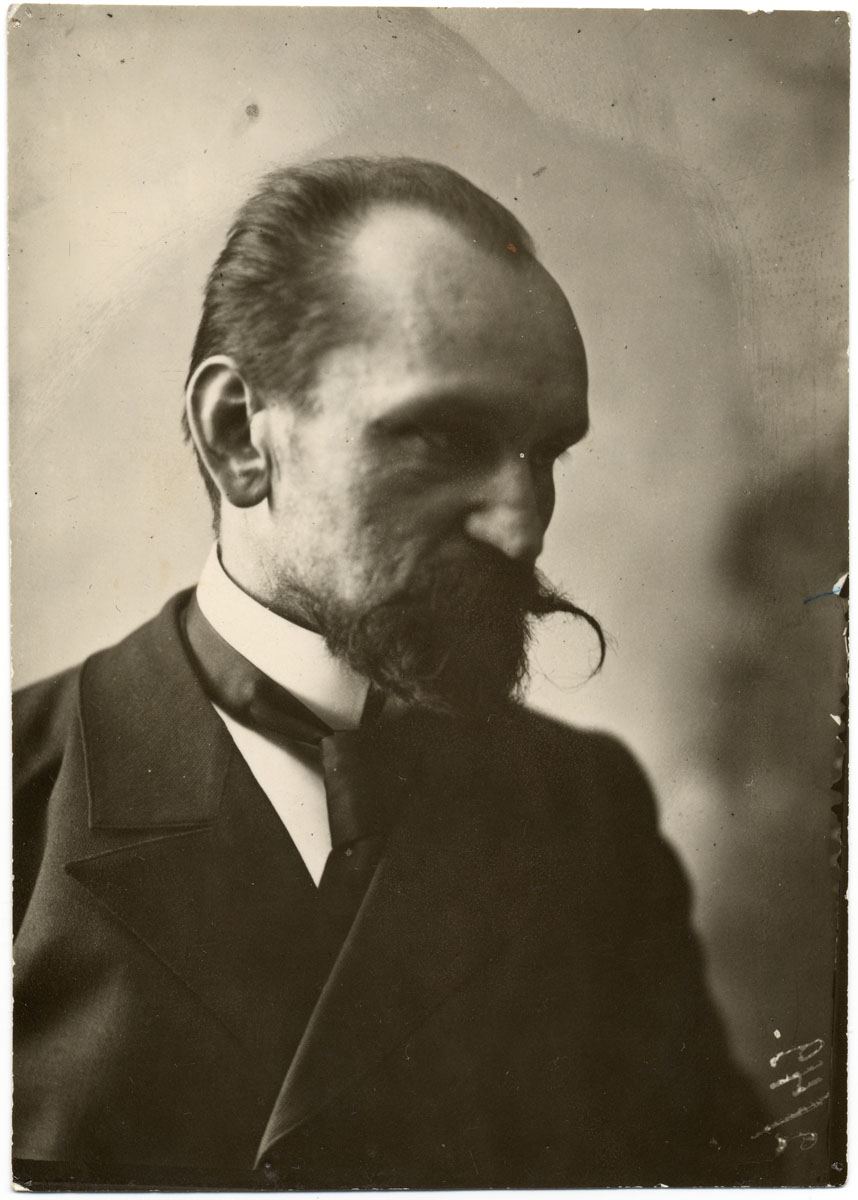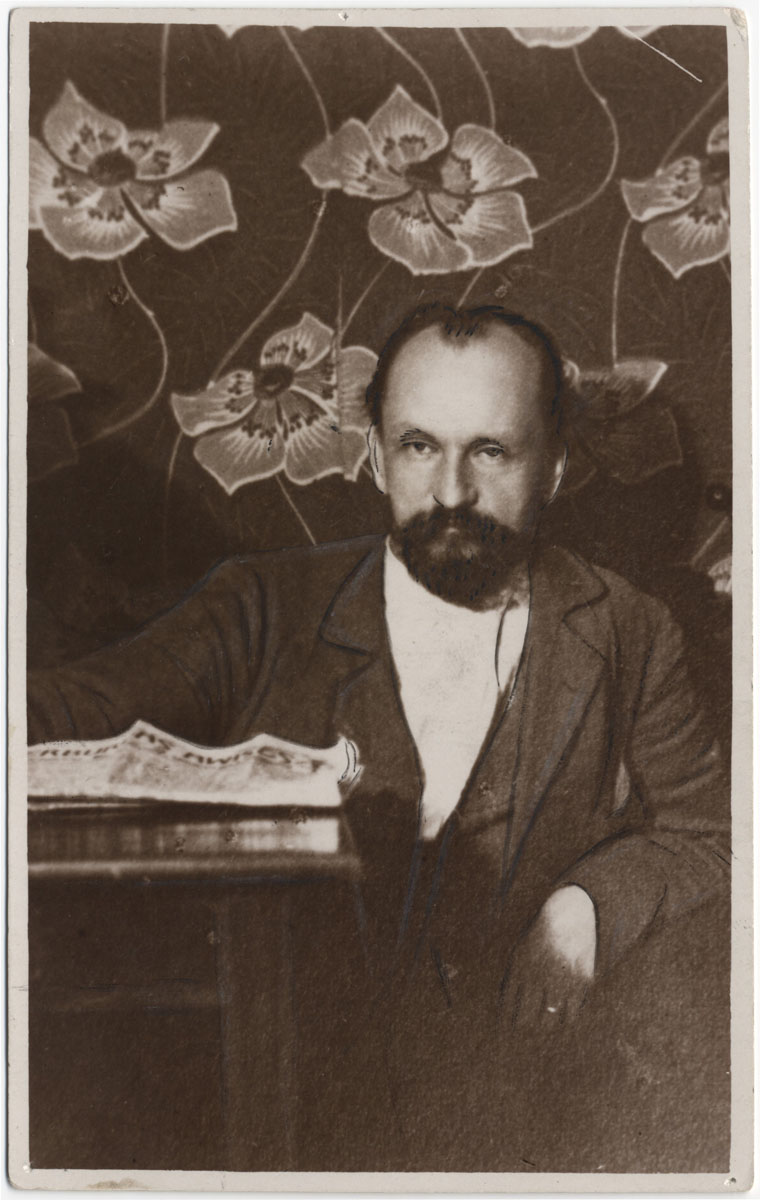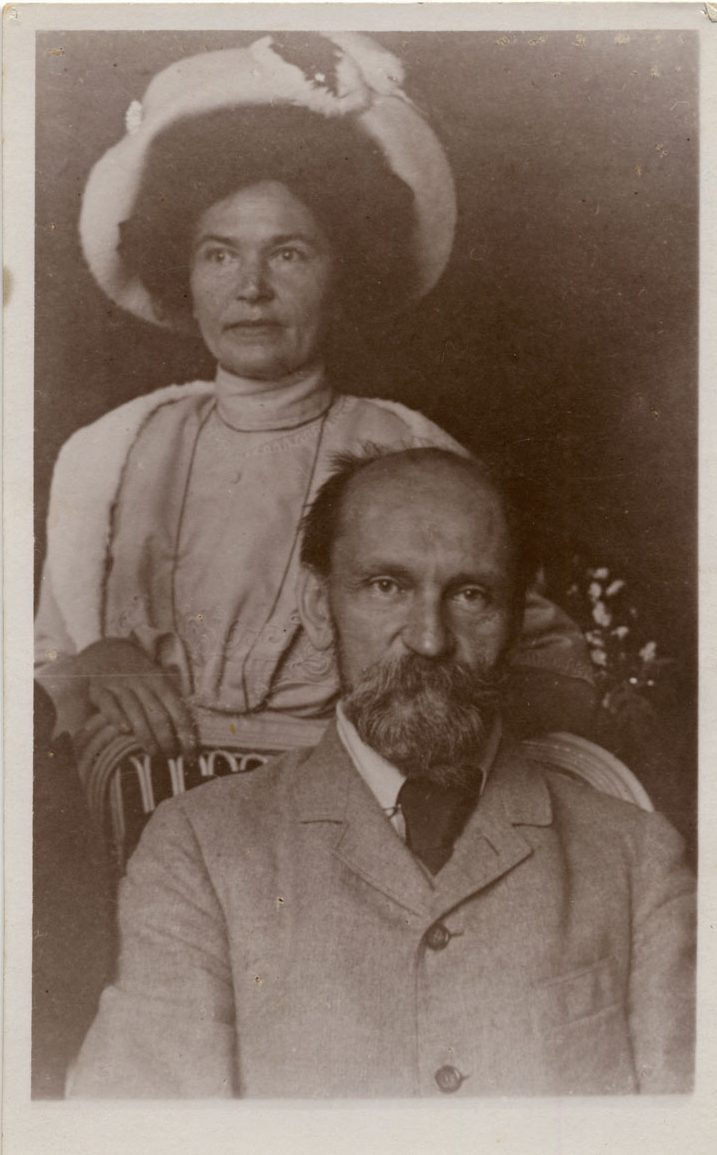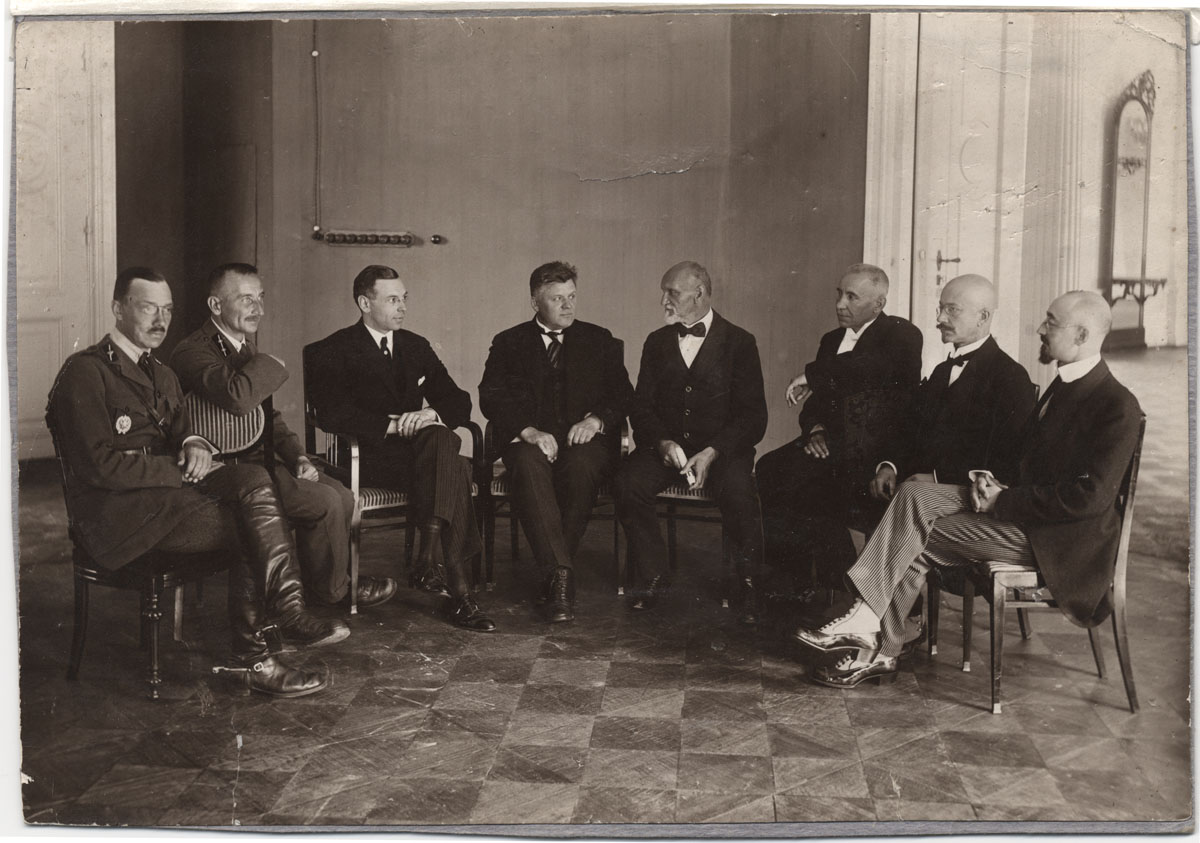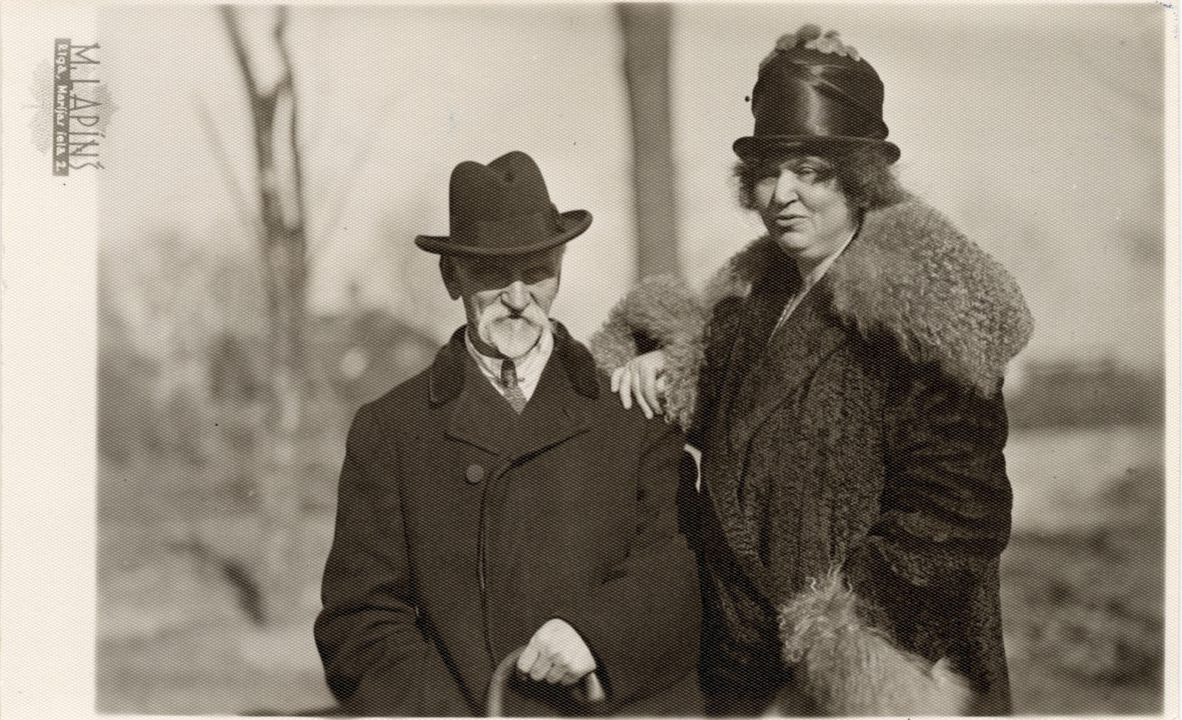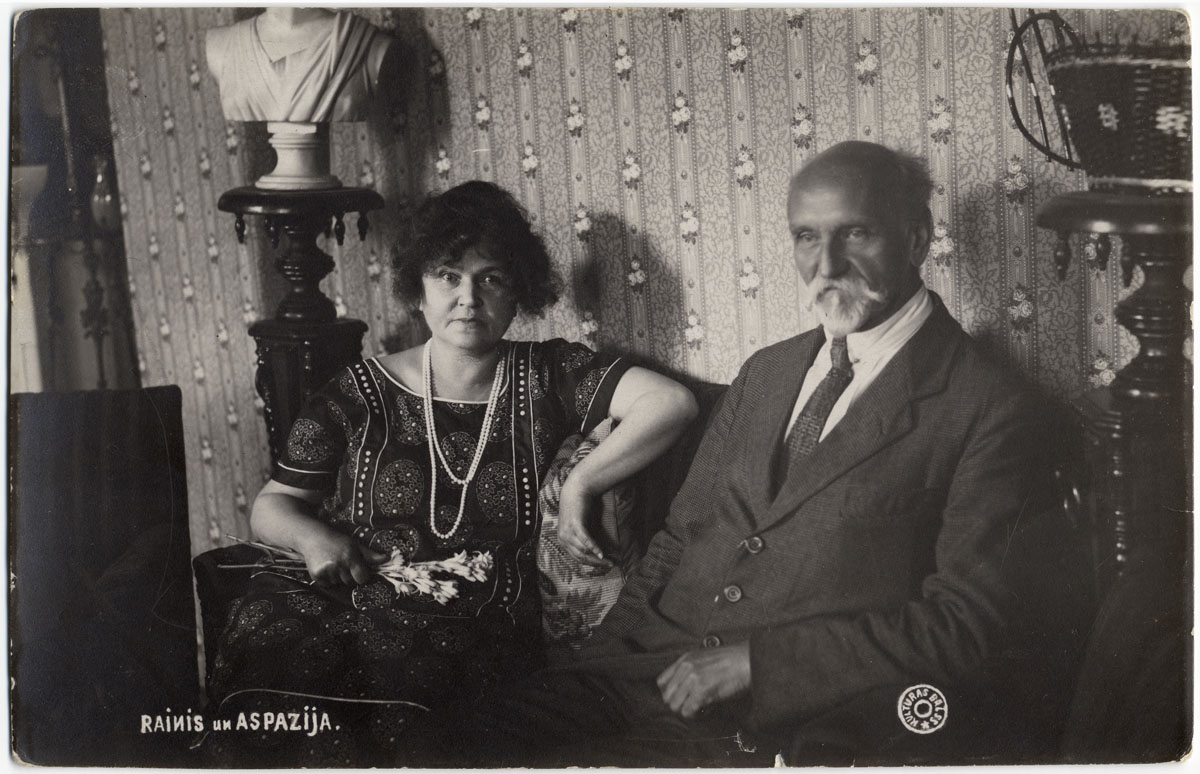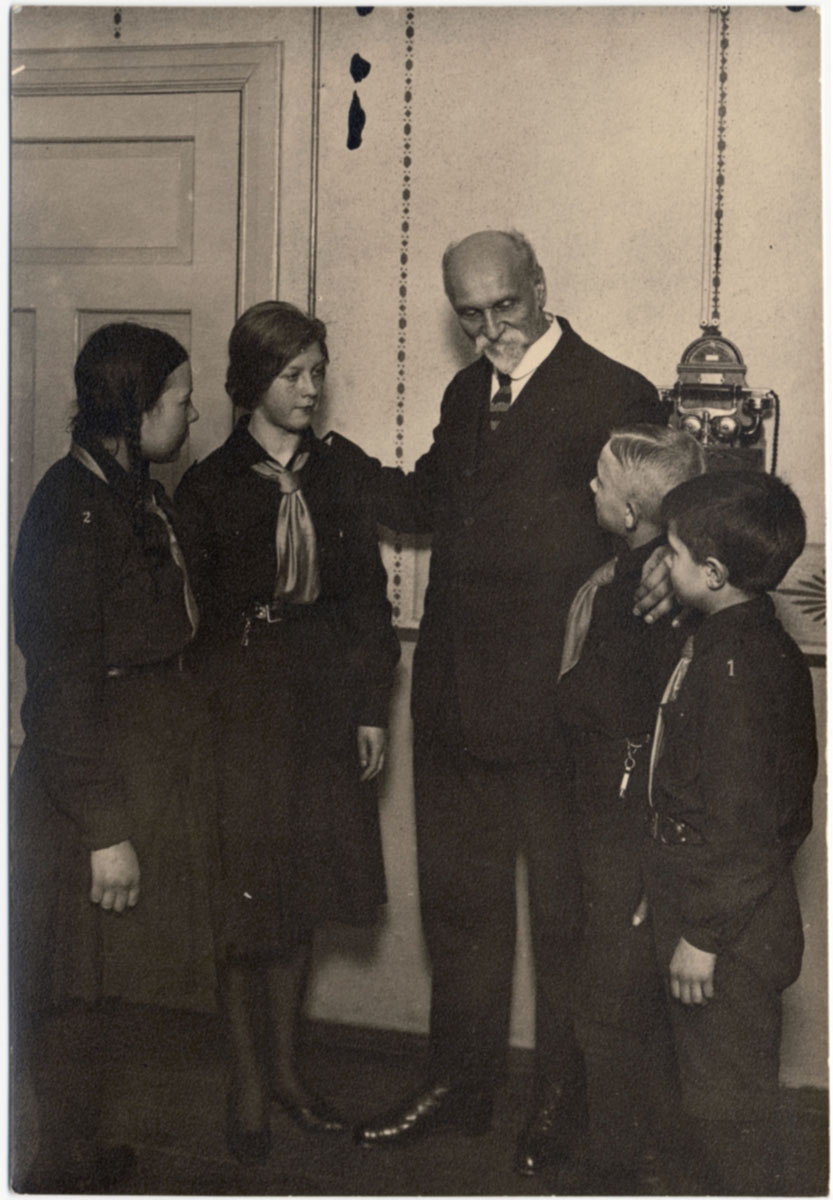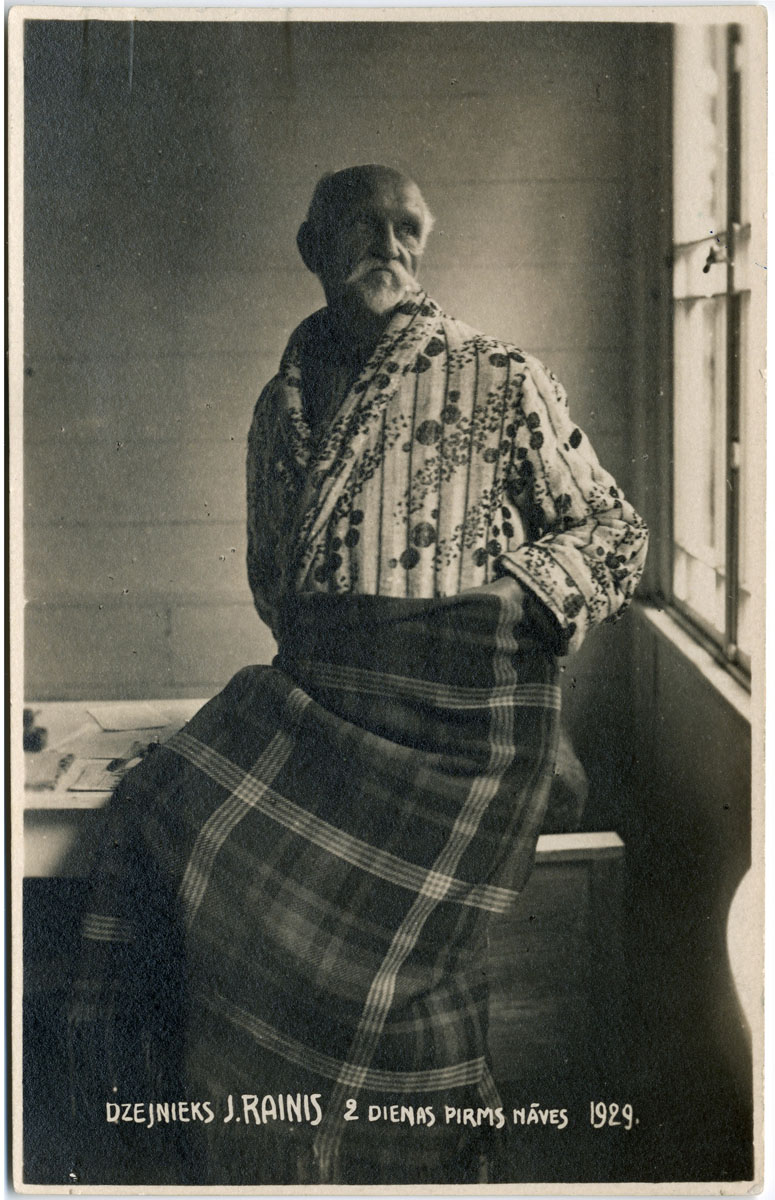Rainis (Jānis Pliekšāns) was a distinguished Latvian author, cultural worker and politician. He was married to the poet Aspazija. Rainis has been recorded in Latvian history as one of the most visible shapers of his nation’s culture and national identity as the Russian Empire was collapsing, as well as during Latvia’s independence battles.
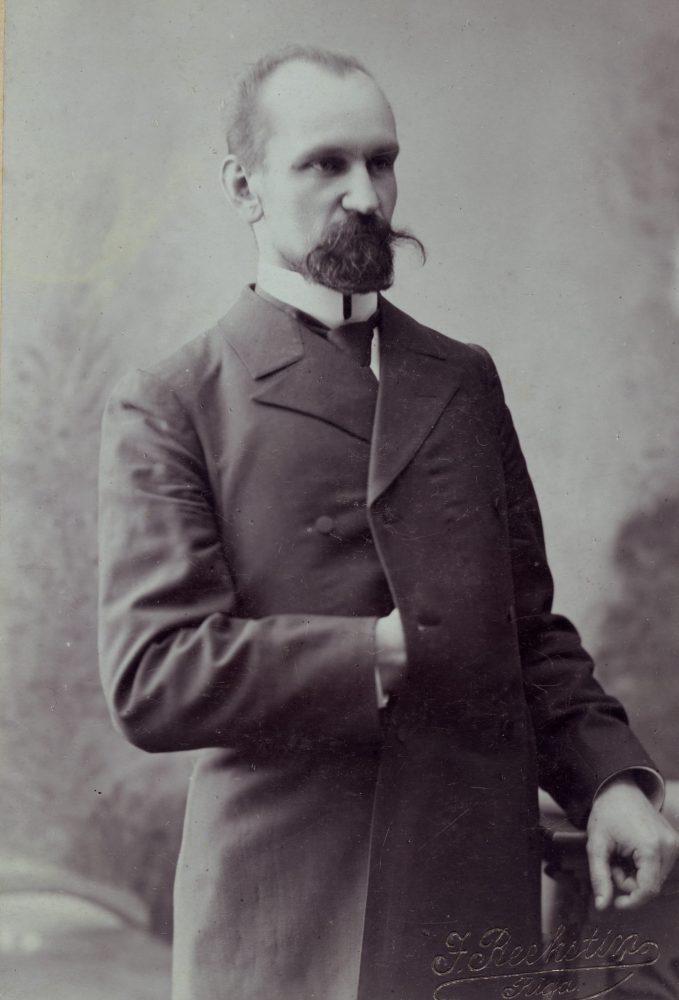
Rainis
1865–1929
Galerija
Rainis’ early work presented Latvian culture as standing alongside that of large nations in the world. A central event in Latvia’s cultural history was the staging of Rainis’ “Fire and Night” (Uguns un nakts) and the New Rīga Theatre under the director of Aleksis Mierlauks in 1911. This represented a modernisation of Latvian theatre, as well as a strengthening of the idea of an independent Latvia.
The period that Rainis spend in exile in Switzerland was the most brilliant period of his creative work. While there, he wrote the play “Joseph and His Brothers” (Jāzeps un viņa brāļi, 1919), and he released a collection of poems, “End and Beginning” (Gals un sākums, 1912). In partnership with the New Rīga Theatre, Rainis wrote the plays “Golden Horse” (Zelta zirgs, 1909), “Indulis and Ārija” (1912), and “Blow, the Wind!” (Pūt, vējiņi! 1914). When Rainis and Aspazija returned to their motherland after 14 years in exile, thousands of people greeted them in the streets as national heroes.
Both Rainis and Aspazija were elected to the Constitutional Assembly of Latvia. Rainis was a candidate of the Social Democratic Party. He was granted an honorary doctorate at the University of Latvia, and Heir to the Throne Boulevard in Rīga was renamed after Rainis. Finally he could watch performance of his plays and enjoy the love of the audience. The Daile Theatre began its work with a performance of the tragedy “Indulis and Ārija” on November 19, 1920. Rainis was a co-founder of the theatre and its first director until 1921.
The writer became youthfully enthusiastic about creating the new Latvian state. He was an active participant in the work of the Constitutional Assembly of Latvia and the Saeima [Parliament]. He directed the Art Department in 1920 and the Latvian National Theatre from 1921 until 1925. Of particular importance was the debut of Rainis’ “Joseph and His Brothers” (Jāzeps un viņa brāļi) in 1920. Between December 1926 and January 1928, he served as the Minister of Education. It was the domestic conjuncture of the Social Democratic faction in the Saeima which kept Rainis from being the chairman of the Constitutional Assembly. He also was not elected to the presidency of Latvia, and his party affiliation to a certain extent became an obstacle against Rainis nomination to the Nobel Prize. This was a continuation of the motif of betrayal that was so common in Rainis’ life.
During his last years, Rainis actively participated in publishing his collected works (1925˗1931). In order to deal with his sadness and to improve his health, Rainis travelled throughout Western Europe, Scandinavia, as well as Egypt and Palestine. He had extensive contacts throughout the cultural elite of Europe. Powerful nostalgia pulled him back to Castagnola, which he visited in 1921, 1926 and 1927. During his last visit, Rainis wrote a memoir, “Castagnola” (Kastaņola, 1928) in which he admitted that he loved Switzerland as his second motherland. He confirmed deep thanks in his own name and that of Aspazija.
Rainis suddenly died in September 1929, one day after turning 64. He had not completed a major book on Modern Faust. Several collections of poems were also unfinished, as were drafts of more than 100 plays. The greatest correlation of Rainis’ literary heritage is a release of his collected works in 30 volumes between 1977 and 1986, as well as a four-volume set of his translations (1989˗1990).
Rainis was buried at the Riga New Cemetery on September 15, 1929, and the cemetery was soon renamed in his honour.
The Depository of Literature, Theatre and Music Collections has a huge collection related to Rainis and Aspazija ˗ more than 45,000 items, including 14,420 letters that they wrote. 2,499 letters in Latvian, Russian and German were sent by Rainis and Aspazija to one another. In 2009, this correspondence between two creative individuals was listed on the Latvian National Register of the Memory of the World Programme.

